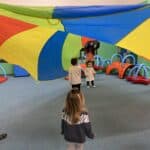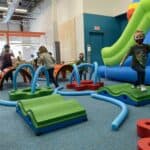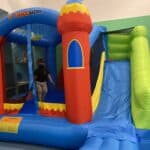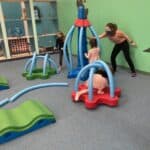
When the weather doesn’t cooperate or you simply want a break from the great outdoors, indoor play areas provide the perfect solution for parents and children. These spaces, specifically designed to cater to kids’ playtime needs, offer a safe and entertaining environment for children to unleash their energy and imaginative spirits. In this blog post, we’ll explore the benefits of indoor play areas and provide some ideas for creating a world of fun and exploration, rain or shine.
1. The Benefits of Indoor Play Areas
– Safe Environment: Indoor play areas are enclosed spaces that ensure the safety of children, minimizing the risk of accidents or injuries. From padded floors to age-appropriate equipment, these areas are designed with child safety as the top priority.
– Year-Round Fun: Regardless of the weather, indoor play areas provide a space for kids to play and have fun all year long. Rainy days or scorching summers won’t hinder their playtime, ensuring that the joy and excitement of play remain consistent.
– Social Interaction: Indoor play areas bring children together, fostering social interaction and the development of important social skills. Kids have the opportunity to engage with their peers, make new friends, and learn the art of cooperation, teamwork, and communication.
– Physical Development: Play areas offer a vast array of activities that promote physical development. From climbing structures and slides to obstacle courses and trampolines, these spaces allow children to enhance their gross motor skills, balance, coordination, and overall physical fitness.
2. Elements to Consider in Indoor Play Areas
– Age-Appropriate Zones: Creating distinct play areas based on age groups ensures that children can engage in activities that suit their developmental stage. Toddlers and pre-schoolers might have areas with soft play equipment, while older kids can enjoy more challenging play structures.
– Sensory Play: Incorporating sensory experiences into indoor play areas provides a stimulating environment for kids. Elements such as sand and water play, sensory tables, or even interactive walls offer children tactile and exploratory opportunities.
– Imagination Stations: Encourage imaginative play by setting up themed zones within the indoor play area. Whether it’s a pretend grocery store, a mini kitchen, or a dress-up corner, these stations foster creativity and role-playing.
– Quiet Spaces: Consider providing quiet spaces within the play area where children can relax, read books, or engage in more calming activities. These spaces can be equipped with cozy reading nooks, puzzles, or art stations, allowing children to take a break from the active play.
3. Tips for Creating a Safe and Fun Indoor Play Area
– Proper Flooring: Ensure that the flooring of the play area is reliable and shock-absorbing. Materials such as rubber mats or carpeting are ideal for cushioning falls and minimizing injuries.
– Sanitization: Regularly disinfecting the play equipment, surfaces, and toys in the play area is crucial to maintain a clean and healthy environment for children. Implementing strict hygiene protocols ensures the safety of the kids and gives parents peace of mind.
– Adequate Supervision: Having trained staff members present in the indoor play area to monitor the children’s activities and ensure their safety is essential. Staff members can also facilitate games and activities to enhance the overall experience.
– Secure Equipment: Regularly inspect the play equipment for any wear and tear, ensuring that it is securely anchored and free from any sharp edges or broken parts. Maintain equipment according to safety guidelines and promptly address any issues that may arise.
Conclusion
Indoor play areas offer a haven of excitement and adventure for children, regardless of the weather. These spaces provide numerous benefits, including safety, year-round fun, social interaction, and physical development. Creating a successful indoor play area involves incorporating age-appropriate zones, sensory play elements, imaginative stations, and quiet spaces. Safety considerations, such as proper flooring, sanitization, adequate supervision, and secure equipment, are crucial for maintaining a safe and enjoyable environment. With these tips in mind, parents and caregivers can create a world of fun and exploration, rain or shine, for their kids to enjoy.
Need a venue for your child’s next birthday party? Let us help! Contact us today to learn more about what we can do for you!







